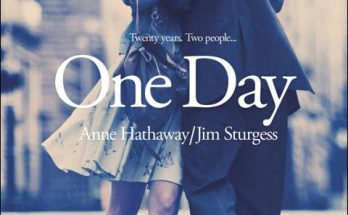With the actors already so invested in their portrayals, Primorac found that “when I first met with them together, there was an understanding between them, as two artists, of Dex and Em’s story – in addition to an incredible chemistry. They only cared about their characters, not about what would suit Anne and Jim, and that was a gift.”
Cinematographer Benoît Delhomme’s work also inspired Primorac, who says that he “seamlessly paints such a beautiful picture of every part of the story; he varies his palettes, which guides the story along emotionally and also conveys the passage of time.”
Scherfig says that Delhomme “embraces and is inspired by the reality and by the surprises that occur when you work in a city as lively and varied as London. His sense of style is extraordinary, and he would easily identify the small visual elements that should differ from one of the film’s summer days to the next. It was almost like we were shooting a series of individual short films back to back, but the overall film has a style of its own. This is very much because of Benoît’s ability to always have fresh eyes even though he already has such a wealth of experience.”
Hathaway notes that “while the film looks lush, what’s happening in the story always feels real. The beauty of a moment is heightened by Benoît’s cinematography. “[Production designer] Mark Tildesley also has an amazing eye, and I want him to come and design my home because every choice he makes is perfect!”
For Tildesley, the key to taking on the assignment “was to envision the story in three stages; early, middle, and end of all the years in which we’re coming back to Emma and Dexter – because there wasn’t that much difference between, say, 1992 and 1994.
“Lone wanted links, and touchstones for the characters; for example, there is a mirror that you first see in Emma’s flat early on. She has bought it in a junk shop, and you’ll find that it travels with her throughout the story. We wanted things that were concise, and based in and with the characters.”
As with many on the filmmaking team, Tildesley found that personal memories would on occasion influence his approach. He notes, “I was in college around the same time Em and Dex are, so that was like a time warp. I got some of my old photos out to look for inspiration in them. Sometimes, coming onto the finished sets felt just…weird.”
David Nicholls agrees, “Seeing aspects of one’s life ending up recreated is bizarre. Emma’s student bedroom was so similar to the ones I remember; the accuracy and attention to detail from Mark’s department, and from Lone, impressed me. “If I were in the art department and knew that something wasn’t actually going to be in the shot, I wouldn’t bother with it. They don’t share that philosophy.”
In finishing the movie, Scherfig enlisted another An Education veteran, film editor Barney Pilling – who, because of their shorthand, began his work while shooting was still underway – as well as Academy Award-winning composer Rachel Portman. The latter’s score is complemented by a soundtrack that echoes what Dex and Em would be hearing during their lives and times – curated by music supervisor Karen Elliott – as well as a bonus musical component; Elvis Costello, the iconic singer/songwriter whose artistry has resonated for decades, saw an early cut of the movie. Costello was so affected by the picture that he conceived an original song to be heard on the soundtrack; “Sparkling Day,” for which he wrote the words and composed the music, is performed by the artist with his band the Imposters. “It’s a very beautiful song,” marvels Scherfig.
Nina Jacobson comments, “The way Lone tells this story feels original and authentic, natural and organic. The performances that she has gotten from our actors are extraordinary.”
Anne Hathaway assesses working with Lone Scherfig as “a real lesson in everything. Lone would always make a choice that I couldn’t predict, whether it was a location or a scene approach.”
Jim Sturgess concurs, “Lone would have me play a sad scene with humor, and a funny scene with poignancy; she would change it up, encouraging you to try different things. This way, she had options on how to shape the piece. I trusted her completely.”
Hathaway comments that “about halfway through filming, I stopped trying to imagine the scenes in my head. I concentrated on knowing my lines and understanding why Emma was saying them – and then kind of left everything else up to Lone. Each day was dynamic because of her.”
Sturgess adds, “Because of that, for us each day on the set would feel like the first day on the set. Lone is possibly one of the funniest people I’ve ever met. But she also cares about every single person on the set, and navigated us to the right tone of the piece. The story holds a lot of layers. She was always tuned in to how to guide us through it.” Hathaway relates, “We found the shared truth to tell Dex and Em’s story. As a result, there is a joyous quality to One Day.”
Scherfig concludes, “I wouldn’t want to make a movie that was lacking in love or in humor, and this one has a lot of both. So I hope audiences will laugh and cry – sometimes at the same time – with Emma and Dexter.”
Hits: 47



